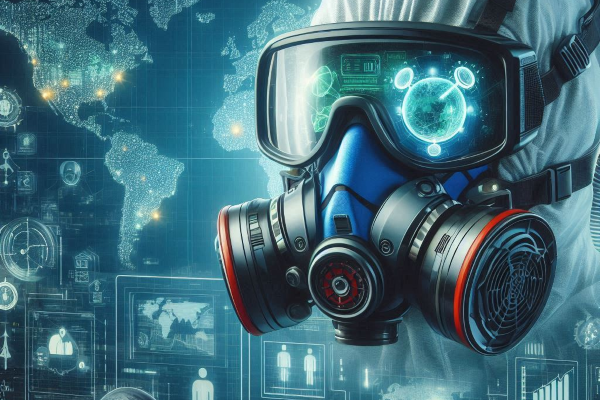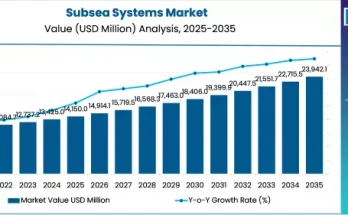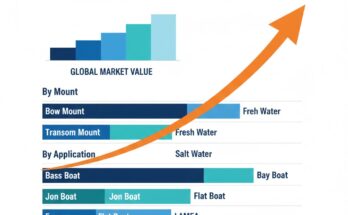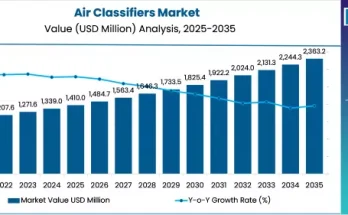As industries across the globe navigate heightened safety requirements and increasing environmental risks, the respiratory protection equipment (RPE) market is poised for substantial growth over the coming decade. From industrial workplaces to healthcare facilities, RPE has become an indispensable element in safeguarding workers and professionals against airborne hazards.
With the rise in awareness about occupational safety and stricter government regulations, the adoption of high-quality respiratory protection solutions has become a critical focus. This shift is not just driven by compliance, but also by a growing corporate commitment to health and well-being.
The market is evolving rapidly, offering a diverse range of products—from basic disposable masks to advanced powered air-purifying respirators (PAPRs)—tailored for varying levels of exposure and risk.
Market Overview:
Respiratory protection equipment includes a broad array of devices designed to protect the wearer from inhaling harmful dust, gases, vapors, or pathogens. The market spans various product categories such as air-purifying respirators, supplied air respirators, and escape respirators.
Rising demand from industries such as manufacturing, construction, mining, pharmaceuticals, and healthcare has contributed to the expansion of this market. The COVID-19 pandemic acted as a catalyst, significantly accelerating demand across both occupational and consumer sectors. However, even post-pandemic, awareness of respiratory hazards and preventive protection continues to grow.
The global shift towards safety-centric workplace culture is further propelling manufacturers to innovate, incorporating features such as enhanced filtration efficiency, ergonomic design, longer battery life (for powered systems), and integration with smart technologies.
Regional Insights:
North America
North America holds a strong position in the global respiratory protection equipment landscape, supported by rigorous standards from agencies like OSHA (Occupational Safety and Health Administration) and NIOSH. The U.S. is seeing increased RPE demand across oil & gas, chemicals, and emergency response units. Investments in worker safety and emergency preparedness remain high.
Europe
Europe is witnessing a surge in RPE adoption due to stringent regulations surrounding industrial safety and environmental pollution. Industries are aligning with directives such as the EU’s Personal Protective Equipment Regulation (EU 2016/425), leading to growth in demand for certified and compliant products. Countries like Germany, the UK, and France are key contributors.
Asia-Pacific
Asia-Pacific is emerging as the fastest-growing region for RPE. Countries such as China and India are industrializing rapidly, and along with that comes the challenge of air pollution and occupational hazards. Government efforts to improve industrial safety standards and public health, especially in manufacturing and construction, are driving demand.
Market Segmentation & Product Types:
By Product Type:
- Air-Purifying Respirators (APRs)
These include disposable masks, half-mask, and full-face respirators. They use filters to remove contaminants from the air. Widely used in healthcare, agriculture, and light industrial work. - Powered Air-Purifying Respirators (PAPRs)
These use a battery-powered fan to pull air through filters. Often used in high-risk industries, including pharmaceuticals, chemical handling, and nuclear plants, where prolonged exposure requires advanced protection. - Supplied Air Respirators (SARs)
These supply clean air from a stationary source. Common in confined spaces, painting, and hazardous material handling environments. - Self-Contained Breathing Apparatus (SCBA)
Designed for high-risk environments like firefighting, SCBAs offer independent air supplies and are essential for emergency response.
By End-Use Industry:
- Healthcare: Medical professionals require respiratory protection during surgeries, infectious disease outbreaks, and in labs. The COVID-19 pandemic highlighted the importance of certified, effective respiratory gear.
- Construction & Mining: Workers face dust, silica, and other airborne particulates. RPE is mandatory on most sites, and demand is increasing with new infrastructure projects globally.
- Oil & Gas and Chemical Industries: These sectors handle hazardous gases and chemicals daily. Advanced RPE is crucial for worker safety, particularly in maintenance, refinery, and shutdown operations.
- Manufacturing & Industrial Processing: Welding, painting, and metalworking expose workers to fumes and vapors, necessitating varied types of respirators.
- Defense & Emergency Services: Firefighters, paramedics, and military personnel often require high-performance SCBAs and PAPRs for protection in hazardous environments.
Key Trends & Forecast:
- Shift Toward Reusable and Sustainable Products
Environmental concerns are pushing industries to adopt reusable respirators with replaceable filters, reducing disposable waste. This trend is driving innovation in durable and easy-to-maintain designs. - Integration of Smart Technology
Manufacturers are introducing RPE with smart sensors, Bluetooth connectivity, and real-time air quality monitoring. This innovation enhances situational awareness and promotes proactive safety management. - Rising Demand in the Pharmaceutical Sector
With a growing focus on sterile manufacturing environments, the pharma industry is driving demand for advanced respiratory protection systems that ensure both operator and product safety. - Emphasis on Comfort and Ergonomics
Long-duration usage is leading to demand for lighter, breathable, and more comfortable respirators. Ergonomically designed gear improves user compliance and reduces fatigue. - Customization for Specific Hazards
Industries are moving toward task-specific RPE that offers specialized protection based on exposure type, duration, and work environment.
Competitive Landscape:
The respiratory protection equipment market is highly competitive, with key players focusing on R&D, product certifications, and regional expansion. Companies are prioritizing partnerships with distributors, healthcare providers, and industrial safety regulators to strengthen market presence.
Some major players are investing in automation and sustainable production methods to improve cost-efficiency and reduce environmental impact. The push for local manufacturing capabilities is also gaining momentum to mitigate global supply chain disruptions.
Applications & Use Cases:
- Emergency Response: SCBAs and escape respirators are critical in disaster relief, chemical spills, and fire rescue operations.
- Healthcare & Laboratories: Surgeons, lab technicians, and infectious disease specialists use APRs and PAPRs to maintain sterile environments and avoid contamination.
- Agriculture: Farmers and agronomists utilize respirators to protect against pesticides and allergens during crop spraying and soil treatments.
- Construction & Civil Projects: Dust masks and filtering facepieces protect workers from cement dust, silica particles, and other airborne contaminants.
Market Challenges:
- High Cost of Advanced Equipment
PAPRs and SCBAs can be cost-prohibitive for small enterprises. Price sensitivity in developing regions hampers adoption of high-end equipment. - Lack of Awareness and Training
In some sectors, especially in emerging economies, improper usage and lack of training reduce the effectiveness of respiratory protection. - Supply Chain Disruptions
Pandemic-era disruptions underscored the importance of resilient supply chains. Fluctuating availability of raw materials and components has affected production cycles. - Product Counterfeiting
Low-cost imitations compromise user safety and pose significant risks, especially in unregulated or poorly monitored markets.
Strategic Recommendations:
- For Manufacturers: Focus on user-centric innovations that combine protection with comfort, and expand regional manufacturing units for better supply chain control.
- For Regulators & Policymakers: Strengthen enforcement of workplace safety laws and encourage training programs on proper respirator use.
- For End-Users: Invest in quality certified products and ensure regular maintenance, inspection, and user training for optimal performance.
Conclusion:
The respiratory protection equipment market is no longer confined to niche industrial use—it is becoming an essential pillar of public health, workplace safety, and emergency preparedness. With growing emphasis on employee health, environmental protection, and regulatory compliance, the market is set to experience transformative growth over the next decade.
Industries, governments, and consumers alike must view respiratory protection not as an expense but as a long-term investment in safety, productivity, and sustainability.
Related Reports:
Coconut Crushers Market
https://www.factmr.com/report/coconut-crushers-market
Brine Tanks Market
https://www.factmr.com/report/brine-tanks-market
Hammer Unions Market
https://www.factmr.com/report/hammer-unions-market
Scroll Saws Market
https://www.factmr.com/report/scroll-saws-market



